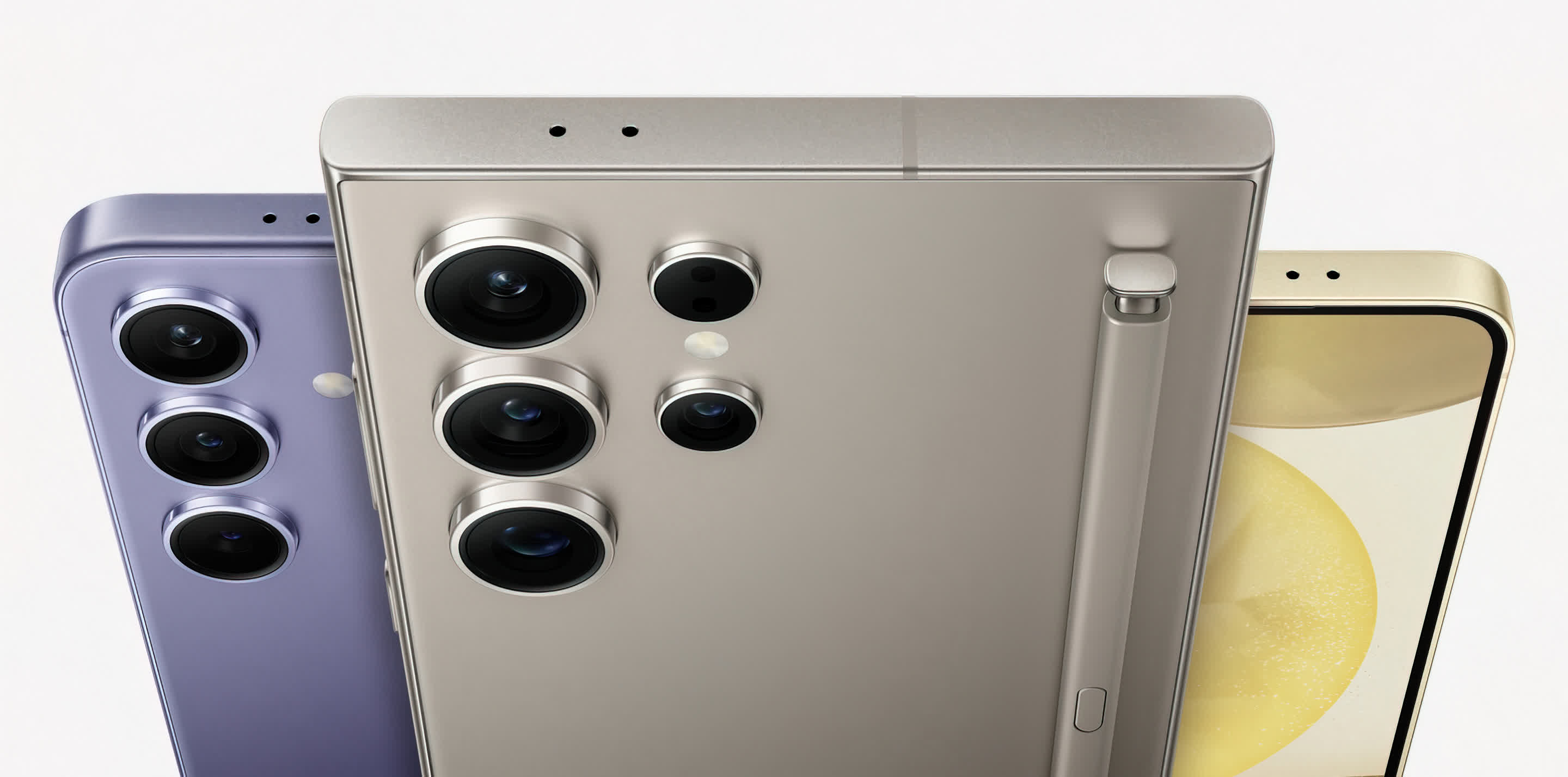Something to look forward to: After years of focusing primarily on hardware advancements, Samsung chose to direct most of its attention to the software enhancements it has integrated into the new Galaxy S24 series of phones at this year’s first Unpacked event. Specifically, the company showed a series of AI-powered capabilities it collectively calls Galaxy AI. This shift aligns well with the recent focus on generative AI, considering the fact that most of these software enhancements are indeed AI-driven.
In a declining smartphone market that’s increasingly competitive for Samsung – and where hardware differentiation is getting harder – of course, it’s also a practical choice that simply reflects the reality of today’s market.
The new software-first strategy also reflects the changing needs and interests of smartphone buyers. While many used to hone in on improved hardware specs, most buyers are now more interested in the types of new experiences that the latest generation smartphones can offer. And that’s what Samsung has emphasized with the S24.
The new Galaxy AI functions include multiple features that make using the latest phones more productive, and more fun. Given the communications-centric nature of a smartphone, many of these features focus on message exchange, including real-time language translation for phone calls and in-person conversations. For text exchanges, a new Chat Assist function can perform not only language translation but also tone adjustment to ensure messages convey the intended meaning. Together, these capabilities significantly advance the long-sought idea of engaging in intelligent, thoughtful conversations with almost anyone worldwide.
Recognizing its role as an information retrieval device, Samsung collaborated with Google to develop a novel search method called “Circle to Search.” This feature allows users to circle, underline, or highlight any text or element in a photo, video, or graphic on the phone’s screen to search for more information about the selected item. As simple as it sounds, it provides a fast, intuitive new way to think about search and is likely to become a popular use among Galaxy S24 users.
Not surprisingly, the Galaxy S24 series also includes AI capabilities that focus on photos and videos through software Samsung calls the ProVisual Engine. Some of these are similar to image editing and creation features we’ve seen from other vendors (notably Google’s Pixel line). The ability to select an object (or person), move it around, remove it, independently alter it and other similar capabilities adds a new level of functionality and refinement to the picture- and video-taking process.
Other features build on existing Samsung capabilities, such as improved low-light capture in their Nightography mode, enhanced software-based image stabilization, improved optical zoom and more. Even though not all of these are new to the market, many are new to the huge audience of Samsung buyers. As with many advanced capabilities, the devil is in the details of how they’re implemented. Samsung has finely tuned these for ease of use and intuitiveness.
Samsung’s focus on software enhancements in the Galaxy S24 line doesn’t mean new hardware was overlooked. Most notably, the devices are among the first to incorporate Qualcomm’s Snapdragon 8 Gen 3 chip, which provides faster computing and graphics performance, as well as an improved NPU to expedite Galaxy AI-powered software features. Samsung has received an enhanced version of this chip, officially named the Snapdragon 8 Gen 3 Mobile Platform for Galaxy, with additional performance tweaks. The top-tier S24 Ultra also introduces support for the new Wi-Fi7 standard and is the first to feature a titanium body.
Samsung has also added security enhancements into the S24 line, including an extension to its Knox line of security functions that it calls Knox Matrix. Leveraging password-less digital credentials, Knox Matrix uses Passkeys to allow secure access to registered websites and apps across trusted devices to reduce the risk of potentially harmful phishing attacks. New Enhanced Data Protection features enable end-to-end encryption of data that’s synced or backed up from your phone to the Samsung Cloud.
Samsung has also made notable strides in sustainability with the S24 line. The S24 Ultra’s batteries include at least 50% recycled cobalt, and the speakers are made with 100% recycled rare earth elements – a first for Samsung. Additionally, the Ultra features 40% recycled steel in its speakers and 10% recycled pre-consumer Thermoplastic Polyurethane (TPU) in its volume buttons.
Taken as a whole, the Galaxy S24 series isn’t the typical Samsung upgrade we’ve seen in the past. The emphasis on the software side make this a different kind of product cycle. However, I think it’s the kind of phone evolution we can expect to see from most of the major phone vendors for the next several years. With the obvious exception of foldables – which Samsung leads via its Z series – traditional smartphones are becoming harder to distinguish from one another.
As a result, the software experiences that companies can enable are likely to be primary points of differentiation for some time. For companies like Samsung who are dependent on Android for most of the software on their devices that could be a daunting challenge. But as Samsung has demonstrated with its new S24 line, it’s possible to do.
Bob O’Donnell is the founder and chief analyst of TECHnalysis Research, LLC a technology consulting firm that provides strategic consulting and market research services to the technology industry and professional financial community. You can follow him on X @bobodtech





